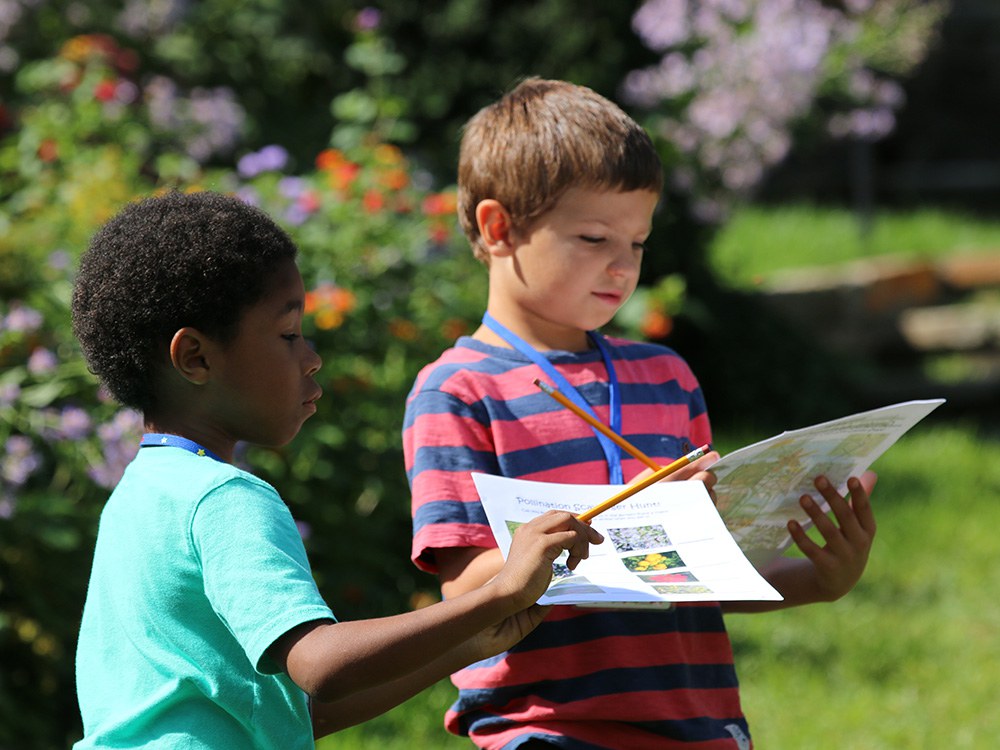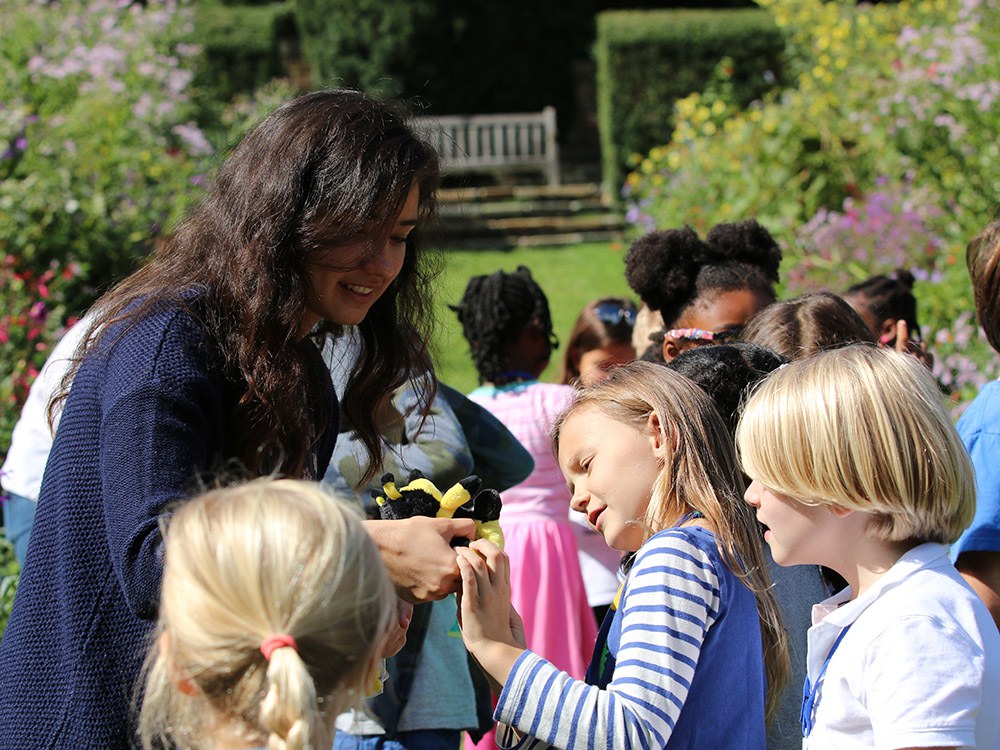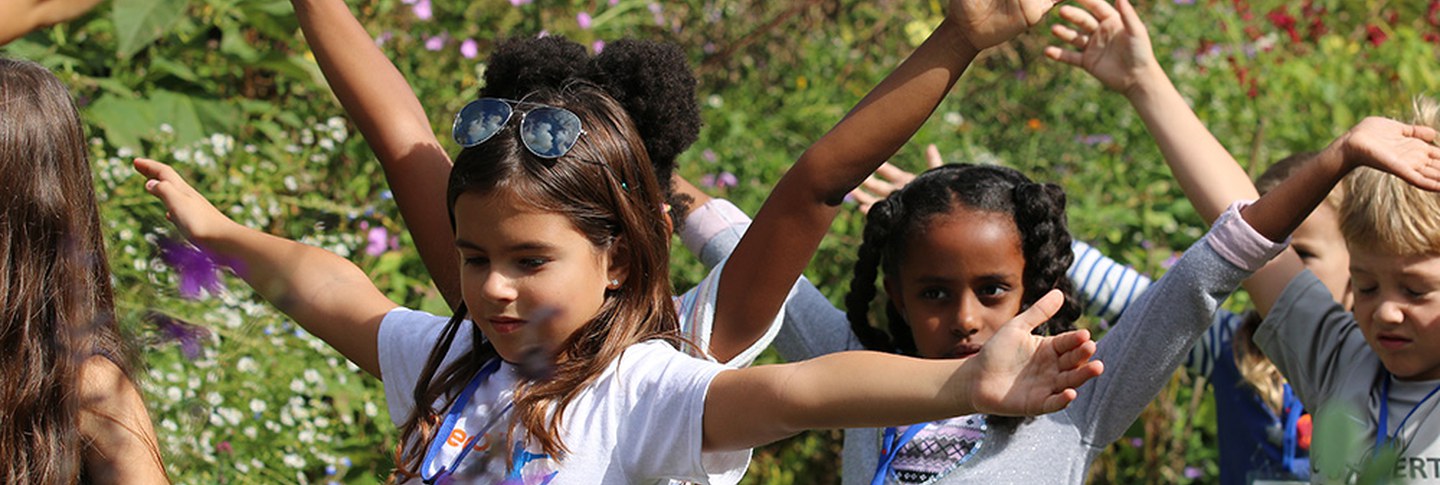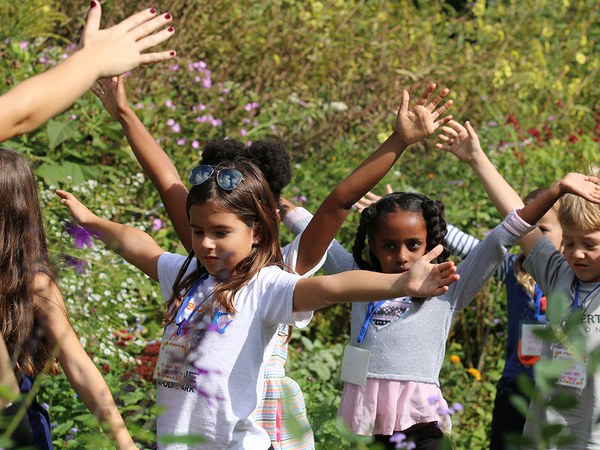Children gaze at the banks of asters and sunflowers that tower above them. “There’s a bird!” one shouts. “I see bees!” chime others. The eyes of a girl in a red coat follow a monarch butterfly as it floats from bloom to bloom among the crimson and gold chrysanthemums. This late October morning, the Herbaceous Border in the Dumbarton Oaks Gardens has become that most beautiful of spaces: a classroom.
Two classes of twenty-three second-grade students from the Hyde-Addison School, a public elementary school a short walk away from Dumbarton Oaks in Georgetown, visited the gardens three times each in the fall in order to supplement their science curriculum. Accompanied by science teacher Adam Severs, parent chaperones, and members of Dumbarton Oaks’ staff, the young students engaged with the basics of plant biology, approaching questions such as: What is a plant? How are they made? How do they grow?
“We created the program so that the second-graders could see things happening in action,” says Nathalie Miraval, public programming and outreach fellow, who designed and taught the curriculum for the new collaboration. While many students may learn about plant science in the abstract from a textbook, “it’s another thing to actually see roots, to water and plant a seed, to see bees on a flower sucking up nectar. It excites the kids, because it exists first in their mind, but then it’s right there in front of them.” Students come away from visits to the Dumbarton Oaks Gardens with a more tangible and memorable experience of concepts and processes like pollination, photosynthesis, and plant germination.
Garden staff, including horticulturalist Luis Mármol and greenhouse specialist Melissa Brizer, offered demonstrations to the classes during their visits, highlighting interesting examples of plants that related to the lessons for the day. Miraval mentions that these moments are some of the most exciting for students, as when Mármol showed the children an ear of multicolored flint corn to explain pigmentation: “Kids are so used to seeing just a single form of corn that they were blown away! Even I was blown away. That was something that they saw and aren’t going to forget. Those are the special moments, the ‘Oh!’ moments, and I hope they carry that wonder with them as long as they can.”
Dumbarton Oaks’ collaboration with the Hyde-Addison School will continue in the spring, when the second-grade classes return for a second set of three visits around the theme “What do plants do for us?”




